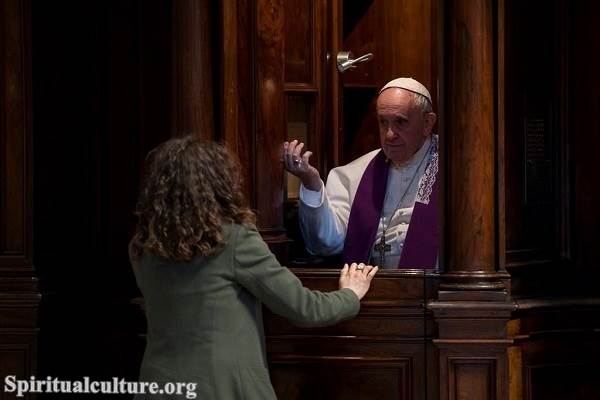In the Catholic Church, the sacrament of confession is also known as the sacrament of reconciliation. It is a way for Catholics to confess their sins, receive absolution (forgiveness) from a priest, and receive guidance for how to live a more virtuous life.

Here is a more detailed explanation of the sacrament of confession in the Catholic Church:
1. Prepare to confess
Spend some time thinking about your sins and any wrongdoings that you need to confess. You may want to pray or meditate to help you reflect on your actions. It is important to approach the sacrament of confession with a sincere desire to repent and to turn away from sin.
2. Go to a Catholic church
Find a church where confession is available, and go at a time when a priest is available to hear confessions. Confession is typically offered regularly at most Catholic churches, and the schedule will be posted at or on the church’s website.
3. Enter the confessional
When you enter the confessional, you will find a partition with a door or curtain that separates you from the priest. You may need to kneel or sit on a bench in the confessional.
4. Make the sign of the cross
When you are ready to begin, make the sign of the cross and say, “In the name of the Father, and of the Son, and the Holy Spirit.”
5. Confess your sins
When the priest asks you to begin, tell him your sins. Be specific and honest. You do not need to go into great detail or disclose personal information you are uncomfortable sharing. Still, it is important to be honest about your actions and the thoughts and intentions behind them.
6. Listen to the priest
The priest will offer words of guidance and may assign a penance, which is a task that you must complete as an act of contrition (sorrow for your sins). The penance may be a prayer, an act of charity, or some other task that helps you to turn away from sin and grow closer to God.
7. Perform the penance
After you have received absolution, the priest will give you your penance. It is important to complete this penance as soon as possible, as it shows your sincere repentance for your sins.
8. Make an act of contrition
After the priest has given you absolution, you should make an act of contrition. This can be done by saying a prayer such as the “Act of Contrition,” which goes as follows: “Oh my God, I am sorry for my sins with all my heart. In choosing wrong and failing to do good, I have sinned against you, whom I should love above all things. I firmly intend, with your help, to do penance, to sin no more, and to avoid whatever leads me to sin. Our Savior, Jesus Christ, suffered and died for us. In His name, my God, have mercy.”
9. Conclude the confession
When you have finished your confession and made an act of contrition, the priest will give you a blessing and dismiss you. It is important to leave the confessional with a renewed commitment to live a virtuous life and avoid sin in the future.


